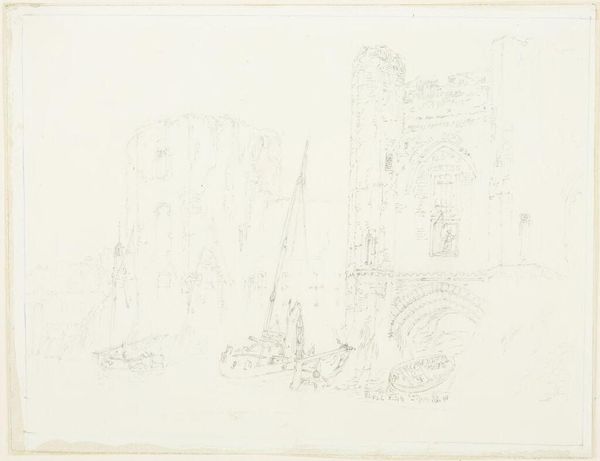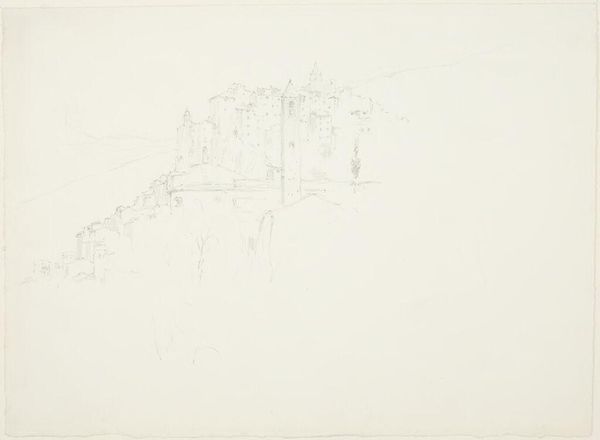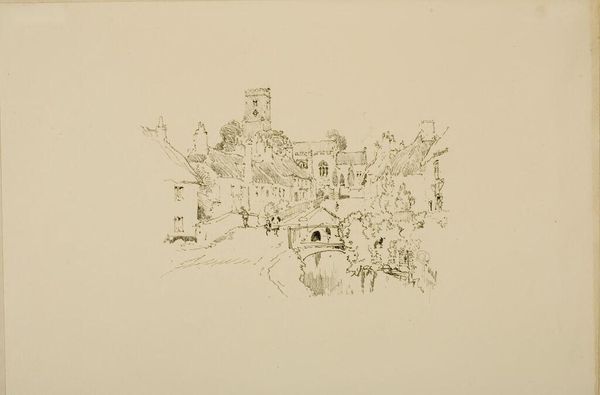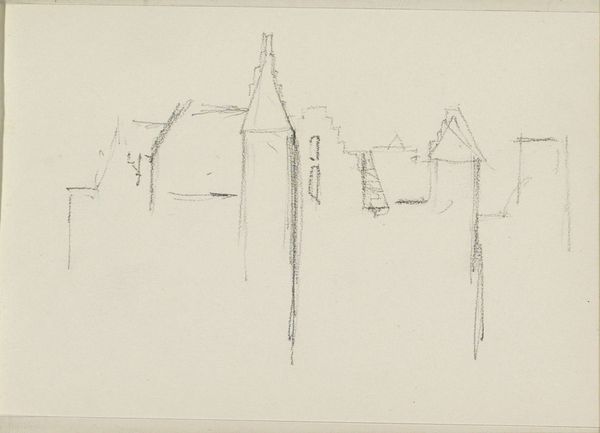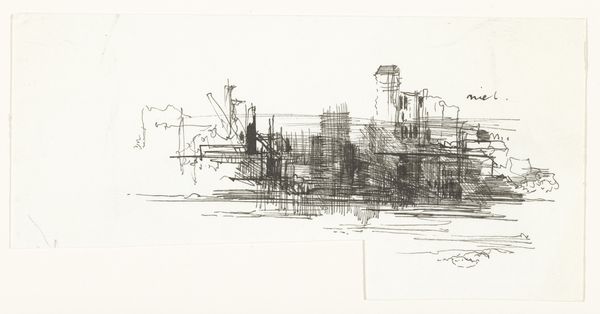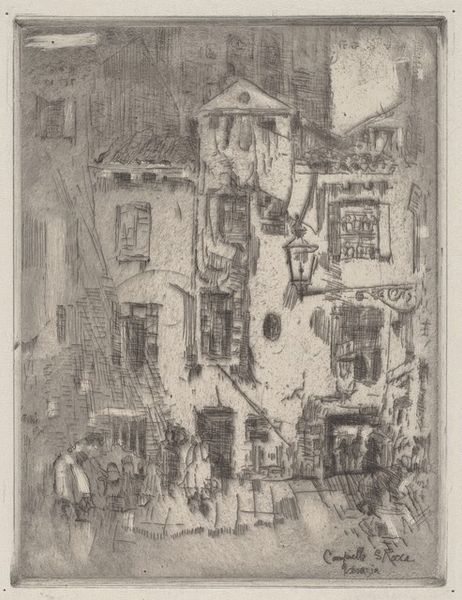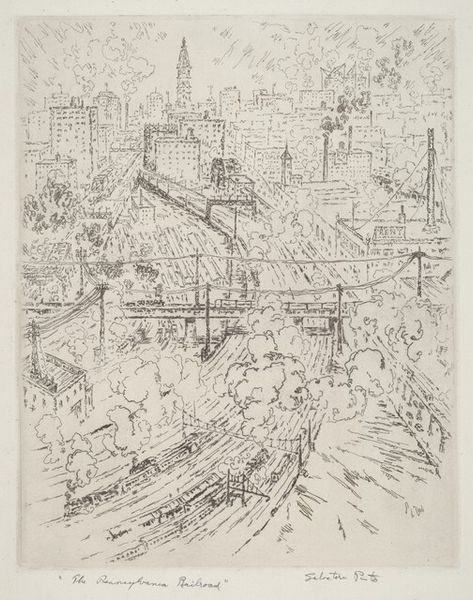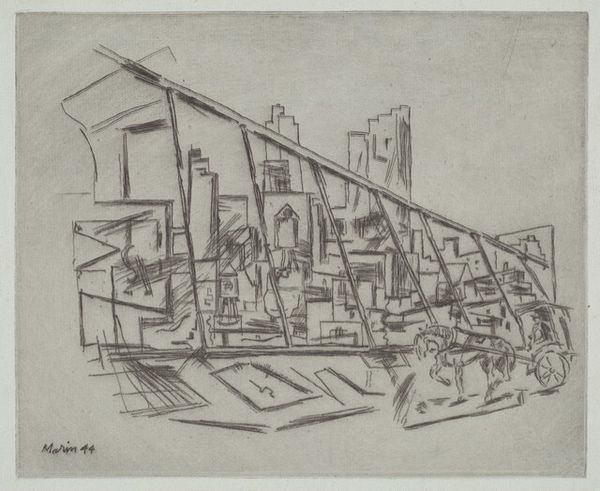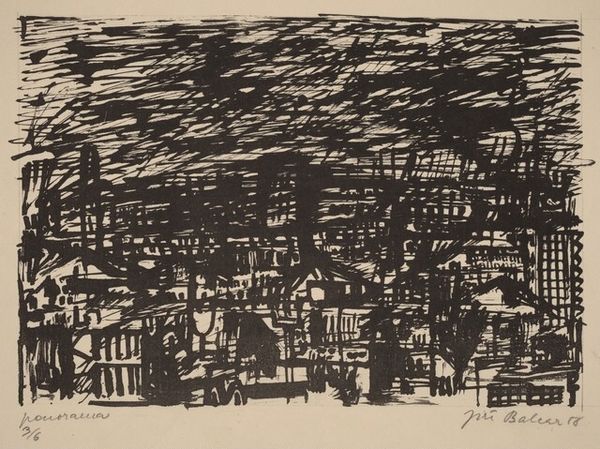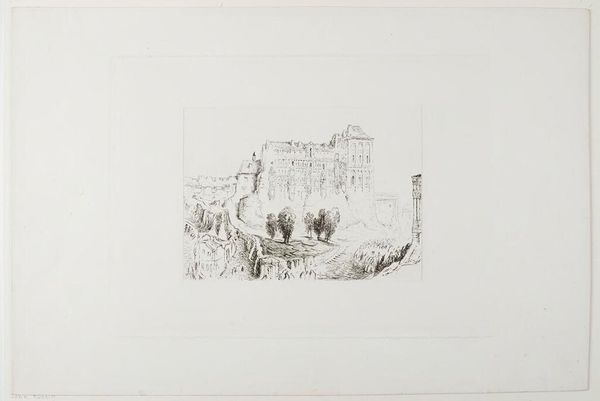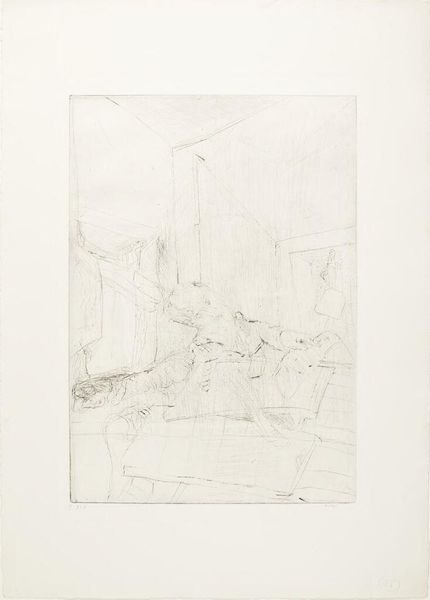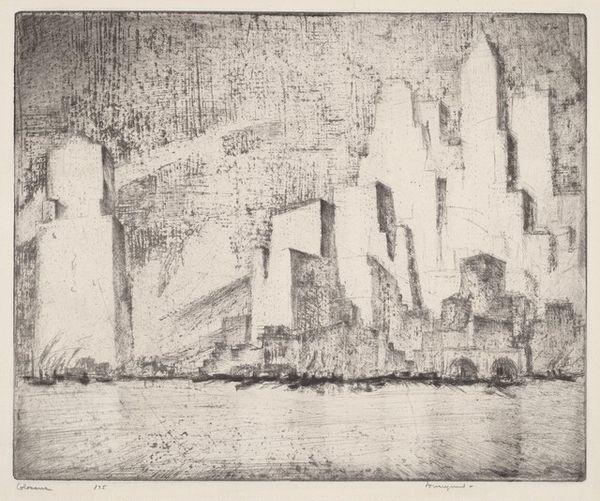
#
ink drawing
# print
#
pen sketch
#
personal sketchbook
#
sketchwork
#
ink drawing experimentation
#
pen-ink sketch
#
pen work
#
sketchbook drawing
#
sketchbook art
#
initial sketch
Copyright: National Gallery of Art: CC0 1.0
Editor: This is Peter Takal's "City Roofs" from 1956, a print that seems to be an ink drawing. It has this ephemeral quality, like a half-remembered dream of a city. What do you see in this piece? Curator: I find myself immediately drawn to the linearity and the artist's masterful manipulation of line weight. The varying thicknesses create depth and volume, suggesting forms without fully defining them. It begs us to ask questions of space and structure within the artwork itself. Note the strategic use of hatching and cross-hatching; where do they emphasize the composition's weight? Editor: I hadn't noticed the varying line weights until you pointed it out. So, you’re focusing more on the "how" of the artwork, rather than the "what?" Curator: Precisely. Consider how the artist directs our gaze through the deliberate placement of these lines. See the way they converge and diverge? Is Takal leading us towards a focal point or deliberately avoiding one? Where is the light, or absence thereof, suggested within these forms? Editor: That’s fascinating. I see it now. The lines create these subtle shadows that really give the rooftops form. But what does it *mean*? Are you suggesting it’s just about lines on paper? Curator: Meaning emerges from form. Is there a discernable system or visual rhyme established by the lines? Or a dissonance? Could that dissonance also produce an idea? How is Takal commenting on line, texture, mass and scale, just to name a few, using these basic art elements and principles? Editor: I see... So, the "meaning" isn't some hidden symbol, but something we derive from how the piece is structured. This way of analyzing art has definitely expanded my perspective. Curator: Indeed. By closely examining the formal elements, we unlock the artwork's intrinsic language. I learned new approaches to analyzing artworks through our conversation as well.
Comments
No comments
Be the first to comment and join the conversation on the ultimate creative platform.

